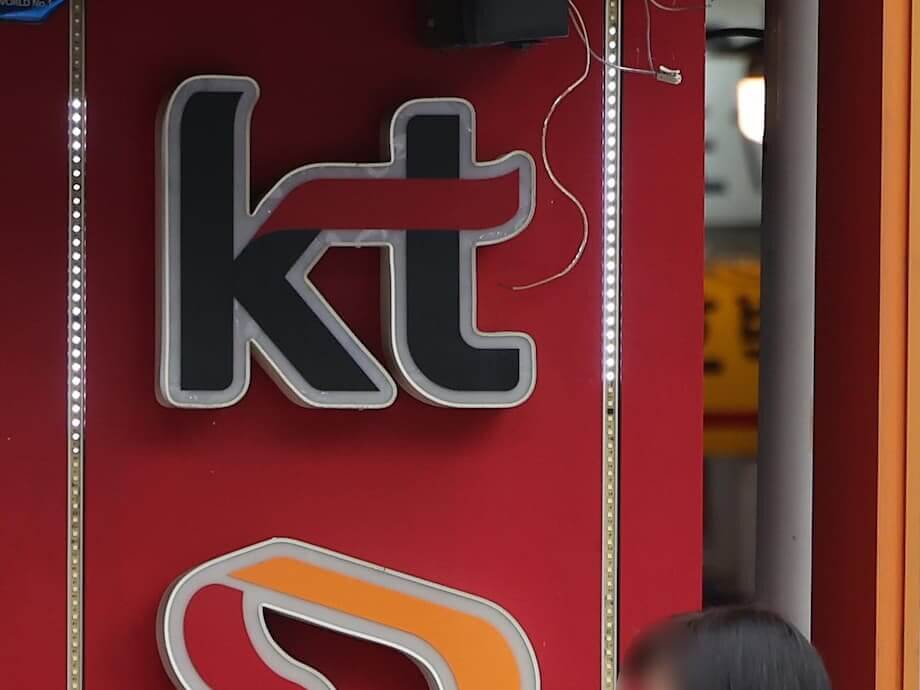South Korea’s Phone Subsidy Law Repeal: A New Era for Smartphone Pricing
South Korea is set to enter a new chapter in its mobile phone market as it officially repeals the decade-old Mobile Device Distribution Improvement Act—commonly known as the phone subsidy law. This landmark policy change, effective Tuesday, promises to shake up the way smartphones are priced and sold, just as Samsung’s Galaxy Z Flip7 and Fold7 and Apple’s iPhone 17 prepare to hit the market. Industry watchers and consumers alike are bracing for a potential “subsidy war” among mobile carriers, with the promise of bigger discounts and possibly even zero-cost phones under certain plans. But what does this mean for everyday consumers, the telecom industry, and the broader Korean economy?
- South Korea’s Phone Subsidy Law Repeal: A New Era for Smartphone Pricing
- Why Was the Phone Subsidy Law Introduced—and Why Is It Being Repealed?
- What Changes for Consumers and Retailers?
- What Are the Risks and Safeguards?
- Will Phones Really Get Cheaper?
- Broader Implications for the Korean Economy and Tech Industry
- What Should Consumers Do?
- In Summary
Why Was the Phone Subsidy Law Introduced—and Why Is It Being Repealed?
The Mobile Device Distribution Improvement Act was enacted in 2014 with the intention of making smartphone pricing more transparent and fair. At the time, the market was rife with opaque deals and excessive, sometimes discriminatory, subsidies that favored certain customers over others. The law capped store discounts at 15 percent above official carrier subsidies and required carriers to publish fixed subsidy amounts for each device and plan. The goal was to prevent unfair practices and ensure all consumers had access to similar deals.
However, over the years, critics argued that the law had unintended consequences. Instead of fostering competition, it limited the ability of carriers and retailers to offer attractive deals, ultimately inflating smartphone prices and making it harder for consumers to find bargains. The number of customers switching carriers—a key indicator of market competition—dropped sharply after the law took effect. Meanwhile, telecom companies’ profits soared, suggesting that the law may have benefited carriers more than consumers.
As complaints mounted from both consumers and industry players, the government decided to repeal the law, aiming to encourage more competition, bigger discounts, and greater pricing flexibility. The move is seen as a major shift towards a freer, more competitive market.
What Changes for Consumers and Retailers?
With the repeal of the subsidy law, several key changes come into effect:
- No More Subsidy Caps: Carriers and retailers are no longer restricted by government-set limits on subsidies. This means they can offer larger discounts—or even sell phones at zero cost—depending on the plan and promotion.
- Flexible, Competitive Pricing: Discounts will now vary by store, carrier, and contract type. Consumers are encouraged to shop around and compare offers before signing up.
- Transparency Requirements: While carriers are no longer legally required to publish fixed subsidy amounts, the major players (SK Telecom, KT, and LG Uplus) have agreed to continue posting subsidy information online by rate plan. Retailers must clearly explain all subsidy conditions in their contracts.
- Discriminatory Pricing Rules Relaxed: Retailers can now offer different discounts depending on whether a customer is switching carriers, starting a new plan, or upgrading. This kind of “discriminatory” pricing was previously restricted but is now allowed, as long as everyone under the same conditions gets the same deal.
- Consumer Protections Remain: Protections against discrimination based on age, region, or disability, as well as bans on misleading advertising and being pushed into expensive plans, remain in place. The government will monitor for violations and protect vulnerable groups like seniors and teenagers.
For consumers, this means more choices and potentially better deals—but also a more complex marketplace that requires careful comparison shopping.
How Will Subsidies Work Now?
Under the new system, the amount and source of any subsidy—whether from the carrier, phone manufacturer, or retailer—must be clearly disclosed in the contract. Samsung and Apple, for example, are now required to report monthly data on incentives they provide to carriers and retailers, which will be submitted to the Ministry of Science and ICT and the Korea Communications Commission.
Consumers can still opt for the 25 percent discount for going contract-free, and this can be combined with additional retailer discounts thanks to the looser rules. However, it’s crucial to review who is providing the subsidy, how it’s being applied, and any extra fees or plan requirements before signing a contract.
What Are the Risks and Safeguards?
While the repeal is expected to benefit consumers through increased competition and lower prices, there are concerns about potential market chaos, unfair practices, and the impact on smaller, budget phone providers.
To address these risks, the government has put several safeguards in place:
- Transparency and Disclosure: Retailers must clearly explain all subsidy conditions. Failure to do so can result in penalties.
- Equal Treatment: Stores must offer equal subsidies to everyone under the same conditions (same phone, plan, and contract type).
- Ongoing Monitoring: A joint task force of regulators and telecom firms will meet at least twice a week to monitor the market and respond quickly to any signs of chaos or abuse.
- Protection for Vulnerable Groups: The government will pay special attention to information-vulnerable groups such as seniors and teenagers, ensuring they are not excluded or misled in the new competitive environment.
- Ban on Restrictive Contracts: Telecom companies are prohibited from signing exclusive service contracts with apartment complexes or multiunit buildings that would restrict residents’ choice of provider. Violations can result in significant fines.
Authorities have also clarified that temporary promotional offers for marginalized groups (such as extra subsidies for seniors around Parents’ Day or for people with disabilities during Disability Day) are allowed and do not violate anti-discrimination rules.
Will Phones Really Get Cheaper?
The big question on everyone’s mind is whether the repeal will actually lead to cheaper smartphones for Korean consumers. Industry insiders are predicting a short-term “subsidy war” as mobile carriers ramp up aggressive marketing and offer larger discounts to win over customers. SK Telecom, which recently lost over 800,000 subscribers after a major data breach, is widely expected to launch bold pricing strategies to regain market share.
The timing of the repeal is significant. With Samsung’s latest foldables (the Galaxy Z Flip7 and Fold7) launching on July 25 and Apple’s iPhone 17 expected later in the year, carriers are likely to use these high-profile releases as opportunities to attract new customers with eye-catching deals. In theory, even the latest premium phones could be sold at zero cost under certain plans, though such offers will likely come with specific contract requirements.
However, some analysts caution that the impact may be less dramatic than hoped. The Korean telecom market is already highly saturated, and carriers are investing heavily in new technologies like artificial intelligence, which could limit their willingness to engage in prolonged subsidy battles. There are also concerns that the repeal could threaten the viability of budget phone providers, who may struggle to compete with the deep pockets of the major carriers.
Lessons from Other Subsidy Reforms
South Korea’s move to repeal its phone subsidy law is part of a broader global trend of rethinking and reforming subsidy policies. Studies on energy and industrial subsidies have shown that while subsidies can stimulate investment and competition, they often come with significant costs—such as government deficits, market distortions, and reduced transparency. Effective subsidy reform requires careful monitoring, transparency, and adjustment packages to ensure that benefits are widely shared and that vulnerable groups are protected.
In the tech sector, for example, both the US and Korea have used massive subsidies to boost their semiconductor industries, leading to a global “subsidy race” that has raised concerns about overproduction and escalating costs. The lesson for the mobile phone market is clear: while increased competition can benefit consumers, it must be balanced with safeguards to prevent market chaos and ensure long-term sustainability.
Broader Implications for the Korean Economy and Tech Industry
The repeal of the phone subsidy law is expected to have ripple effects beyond just smartphone prices. By fostering a more competitive and flexible market, the policy change could spur innovation and drive further investment in Korea’s tech sector. It also aligns with the government’s broader efforts to modernize regulations and promote consumer choice.
However, the move also raises questions about market concentration and the future of smaller players. As major carriers and manufacturers ramp up their promotional efforts, budget phone providers and independent retailers may find it harder to compete. The government’s ongoing monitoring and willingness to intervene will be crucial in ensuring that the benefits of the new system are widely shared.
What Should Consumers Do?
For consumers, the new landscape offers both opportunities and challenges. Here are some tips to navigate the post-subsidy law market:
- Shop Around: Discounts and promotions will vary by store, carrier, and plan. Take the time to compare offers before committing.
- Read the Fine Print: Make sure you understand who is providing the subsidy, how it’s being applied, and any extra fees or contract requirements.
- Know Your Rights: Protections against discrimination and misleading advertising remain in place. If you feel you’ve been treated unfairly, you can report it to the relevant authorities.
- Look Out for Vulnerable Groups: If you’re helping a senior or teenager purchase a phone, pay special attention to the terms and conditions to ensure they’re not being misled or excluded.
Ultimately, the repeal of the phone subsidy law marks a significant shift towards a more open and competitive market. While there may be some turbulence in the short term, the hope is that consumers will ultimately benefit from greater choice, lower prices, and more transparent deals.
In Summary
- South Korea has repealed its decade-old phone subsidy law, removing caps on discounts and allowing for more competitive smartphone pricing.
- The change is expected to trigger a “subsidy war” among carriers, with the potential for bigger discounts and even zero-cost phones under certain plans.
- Consumers will need to compare offers carefully, as discounts will vary by store, carrier, and contract type.
- Protections against discrimination and misleading advertising remain in place, and the government will monitor the market to prevent abuse.
- The move could benefit consumers through lower prices and greater choice, but may also challenge smaller budget phone providers.
- The broader impact on Korea’s tech industry and economy will depend on how carriers, retailers, and regulators manage the transition to a freer market.












